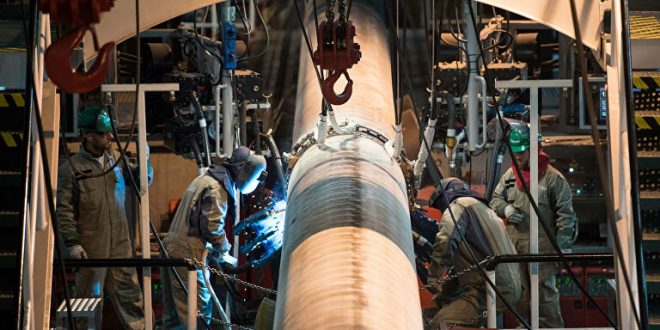Europe is scrambling to reduce its dependence on Russia for energy and bracing for potential disruption to critical natural gas supplies as Russia’s war in Ukraine sends prices to new highs.
The Paris-based International Energy Agency said on March 3 that Russian gas imports could be cut by one-third this year through steps including letting existing gas contracts with Russia expire, finding new supplies from partners such as Norway and Azerbaijan, imposing minimum storage requirements, maximizing use of remaining nuclear plants and offering cash support for vulnerable electricity customers.
Denmark has given the go-ahead for construction of a pipeline to bring Norwegian gas – another major source for Europe – to Poland after permission was suspended last year.
Energinet plans for the Baltic Pipe to partially launch Oct. 1. and be fully operational Jan. 1 with capacity of up to 10 billion cubic meters of gas a year. Europe gets almost 40 percent of its gas from Russia.
Weaning Europe completely off Russian gas by next winter’s heating season would be possible but painful, involving extra costs, according to analysts at the Bruegel research institute in Brussels. Given record LNG shipments are already coming from places like the U.S., a total loss of Russian gas would leave Europe 10 percent to 15 percent short and facing potentially painful steps to reduce gas use, which would hit businesses first.
The price of gas is 10 times what it was at the start of 2021. But it continues to flow through the major pipelines from Russia to Europe, including those through Ukraine, pipeline companies say.
To prepare for any cutoffs as the war intensifies and to reduce Russian reliance, countries are rounding up new supplies of liquefied natural gas (LNG) by ship. They are also speeding up plans for gas import terminals and pipelines that do not depend on Russia and talking about allowing coal-fired power plants to keep spewing climate-changing emissions for longer if it means energy independence.
Yet many of the measures will take months or, in the case of new pipelines and terminals, years. The long-term answer is rapidly building out renewable sources such as wind and solar.
Germany is spending 1.5 billion euros ($1.66 billion) to buy more LNG. Chancellor Olaf Scholz on Feb. 27 proposed building two LNG import terminals, days after blocking the already-completed Nord Stream 2 gas pipeline from Russia to Europe.

 Iran Energy News Oil, Gas, Petrochemical and Energy Field Specialized Channel
Iran Energy News Oil, Gas, Petrochemical and Energy Field Specialized Channel



